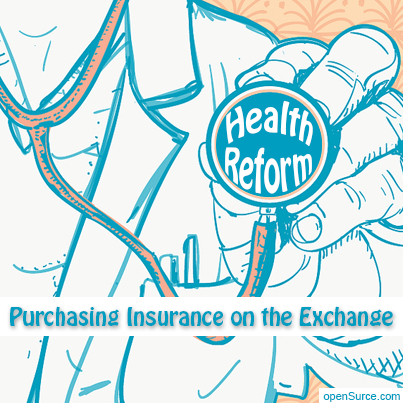
Purchasing Insurance on the Exchange
The New Mexico Health Insurance Exchange opened October 1, and it is clear there are some hiccups as an enterprise as massive as this one moves into action. But they will get over these growing pains and will get it together. Individuals without coverage or those wanting to change their coverage will have six months (October 1, 2013 – March 31, 2014) to enroll through the Exchange. Anyone can enroll now, but the policies will not be effective until January 1, 2014. So you have time to learn about using the Exchange.
Below are a few suggestions for those who want to purchase coverage. These are steps that everyone should use to purchase health insurance regardless of the Affordable Care Act, but with Exchanges, you have more to gain by being prepared. Although this column will show you how to find and use a broker, that is not required. Anyone can sign up on the Exchange on their own, but the use of a broker or health care guide (also called navigators and assistors) is free and they know the intricacies of insurance. Health care guides cannot sell plans but they can help you understand the different choices, and your entitlements. You can find one on the Exchange website.
You can also go on the Exchange website, www.bewellnm.com and use their toll free number that will be staffed 24/7 for help. Remember, there could be a rush in the first few days so call back if you cannot get through on the first try.
Using a Broker
A broker is paid by insurance plans, not by people who purchase insurance. Brokers can educate you about the differences between insurance plans and make a recommendation to you as to the best plan for you and/or your family based on the information provided by you. You can find a broker at www.bewellnm.com or ask friends, colleagues and neighbors if they would recommend their broker. Be sure to find out if the broker is authorized to sell all plans that will be available through the Exchange. The reason this is important is that people may be entitled to access subsidies and tax rebates if they purchase through the Exchange and you want a broker who understands this well and also understands the differences between the plans on the Exchange. If they cannot sell on the Exchange they are likely to steer you away from these plans and your opportunities for subsidies.
Call a few brokers and ask questions such as:
• Are you registered to sell plans on the Exchange?
• Can you sell all the plans on the Exchange?
• Can you help me sort through the choices available and determine if I am entitled to subsidies or other assistance?
Select the broker that seems most interested in helping you and who answers your questions directly. Health guides can assist you as well, however, health guides cannot make a recommendation as to the plan which may be right for you.
Make a checklist before you talk brokers or guides
• Summarize basic information about you and your family members who will be seeking coverage, including your annual income. You can prepare for the meeting with your broker by visiting the Exchange’s website (www.bewellnm.com) and using the online “cost calculator”. This calculator will give you an idea of the information that is needed to buy coverage; such as how many members in your family need coverage, their ages, income levels, etc. The calculator can help you determine whether or not you are entitled to a subsidy. It can also tell you what your basic affordable premium on the Exchange will be. Regardless of what the calculator says, ask the broker or the guide if you are eligible for subsidies.
• If you have a doctor now that you would like to continue to see, check to see if he/she is in the network of the plans you are considering. If not, does your plan offer “out-of-network” coverage? Are you willing to change doctors or pay the “out-of-network” costs for services? What are these costs?
• Think about your family’s health needs. Does someone in your family have asthma, diabetes, or another health condition for which he/she regularly sees a doctor? Under the ACA many preventive services (such as immunizations, pap smears, mammograms and colonoscopies) will be covered by all plans with no cost to you. However, follow-up services which may involve specialist consultations, or additional tests, may be covered differently, and you don’t want any surprises. Make sure you know what to expect when deciding which plans to purchase.
Avoid Costly Surprises
With each plan that falls within your “affordable” range, make sure you understand what your expenses will be for specialist visits, emergency, and urgent care. Does the plan offer co-pays or is there a deductible to meet before the plans pays for services? Compare the cost that you would incur by selecting a plan with co-pays versus deductibles – what would be of higher cost to you: look at all three elements: premiums, co-pays and/or deductibles.
Here is a summary of how you can make the Exchange work for you:
1. Find a health guide to help with the basics or a broker that is qualified to sell all the plans available on the Exchange.
2. Make sure you take a list of your income level and the family members you would like covered to the meeting with the broker and ask about subsidies and tax credits.
3. Make a list of the physicians and services you routinely access every year – both for prevention and for treatment of existing health conditions. Make sure these services are covered by the plan, and what these services will cost you.
4. Ask about whether you qualify for subsidies or tax deductions.



Responses to “Countdown to Health Reform III”